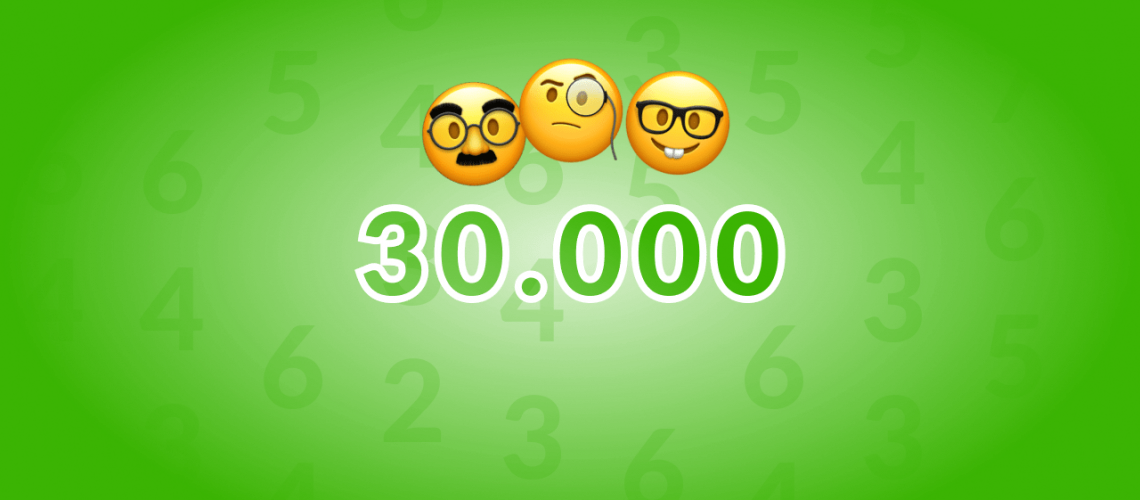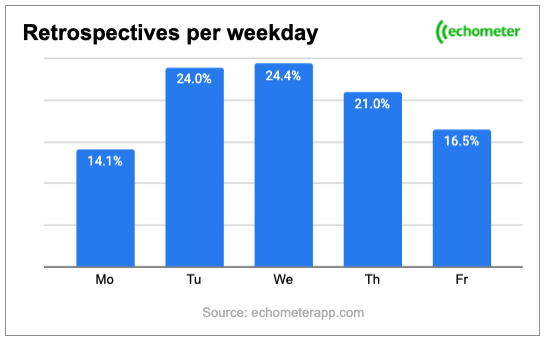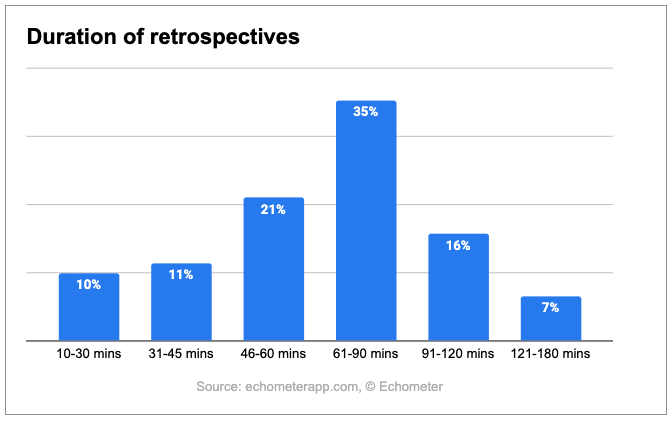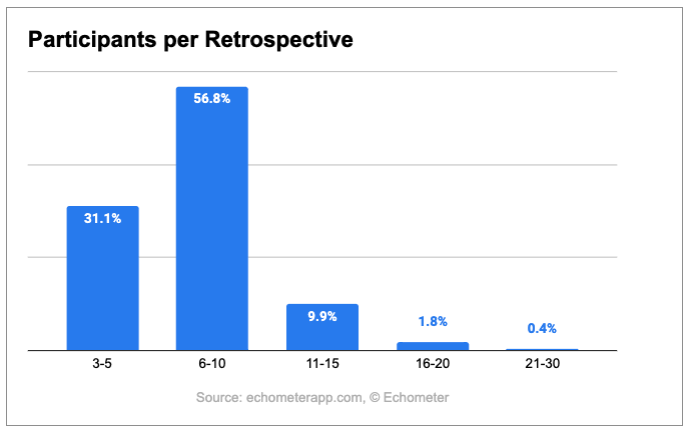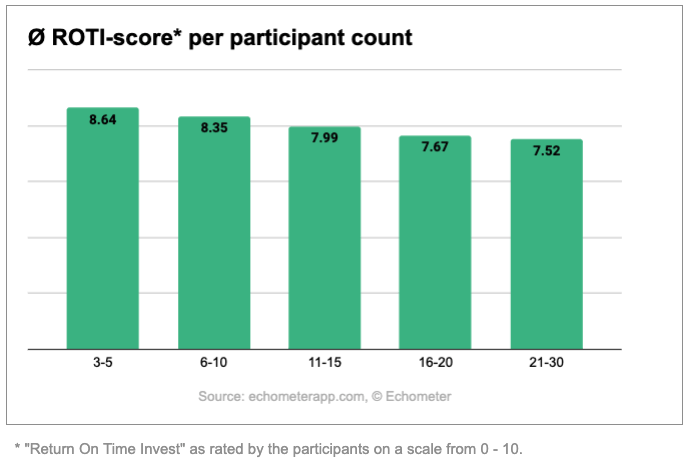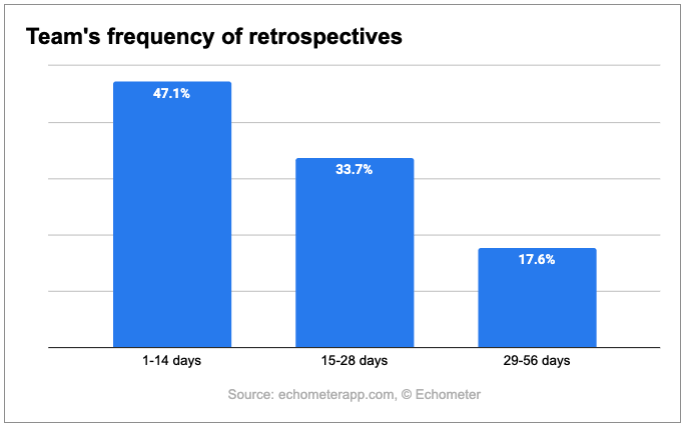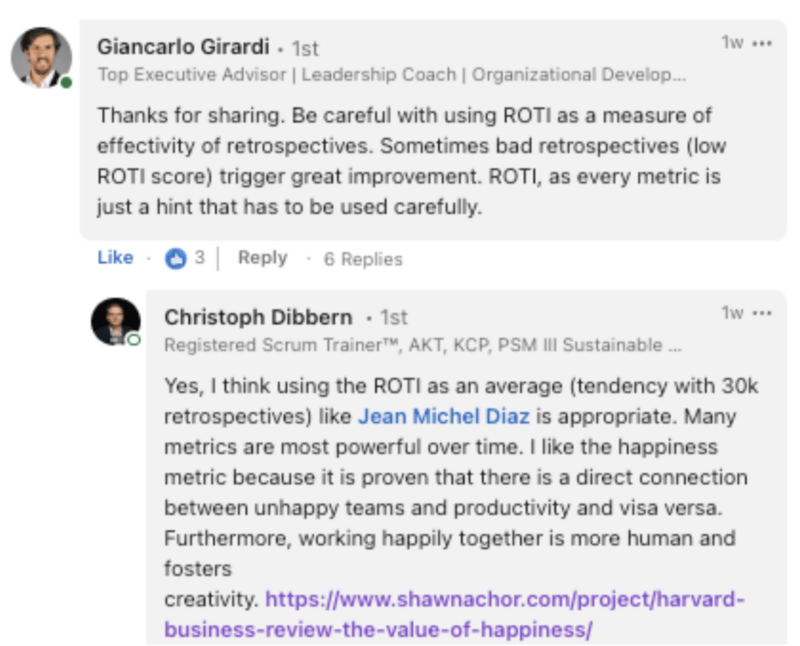An experienced Agile team is likely to conduct quite a few agile Retrospectives during their journey. That's enough to gain an intuitive understanding of what's working and what's not. But what can you learn when you draw on 30,000 retrospectives?
In this article we want to pursue this question and share some surprising, data-driven insights with you.
Why we share our analysis and insights around agile retrospectives
Our goal at Echometer is to make retrospectives and team development better data-driven. Of course, we do this primarily for our users, but in a broader sense also by stimulating a dialogue about retrospectives in the agile community.
By sharing our insights from over 30,000 Retrospectives we would like to create a concrete basis for discussion about what makes good retrospectives and how you can improve your own retrospectives.
In this article we share the first insights from our analysis. Maybe there will be a surprise or two for you too.
Here we go:
The average ROTI score* across all analyzed retrospectives is 8.33/10.
💡 What is the ROTI score?
When checking out a retrospective, the ROTI (“Return on Time Invested”) is used to determine how well the time was invested in the retrospective. Each participant gives an answer on a scale from 0 (poorly invested) to 10 (super invested).
The ROTI score is the average of these answers.
Insight 1: Wednesday is the most popular day of the week for retrospectives 🗓️
What is the most common day of the week for a retrospective?
Wednesday wins as the most popular day for retrospectives with 24.4%, just ahead of Tuesday with 24%.
Only 14.1% of the retrospectives take place on Mondays. With 16.5%, Friday also has fewer retros –, although one might think that a Friday is also a good way to end the week for a retrospective?
What is the best day of the week for a retrospective?
Interestingly, the ROTI score of the retrospectives on Fridays are the highest of all weekdays with 8.52/10!
Wednesday, in turn, ends with a slightly below-average ROTI score of 8.25.
Monday might actually not be the best day for a – retrospective, at least that's what the ROTI score of 8.14 suggests.
Insight 2: The average retro duration is 1 hour and 11 minutes ⏰
How long does an average retrospective last?
While the average retrospective lasts 1 hour and 11 minutes, only 35% fall in the 61 to 90 minute category.
Only about 7% of the retrospectives in Echometer lasted longer than 2 hours. After all, short retrospectives between 10 and 45 minutes make up 21%.*
* Note on Analysis: You may have noticed that we didn't consider <10 minutes and >180 minutes in this analysis. Why? The outliers below are in many cases “demo retrospectives” to showcase the tool. With longer retrospectives (>180 minutes), there are often such long periods of inactivity that it can be assumed that the tool was used somewhat differently than expected.
How long do the best retrospectives last?
The best retrospectives last 30-45 minutes. At least if you take the ROTI score of 8.5/10 of the participants as a basis. However, the gap to the category “46-60 minutes” with 8.47/10 is very small.
On the other hand, it is clearly recognizable that the satisfaction of the team members decreases with longer retrospectives. But even with an 8.17/10 on “121-180 minutes,” the score is good enough to suggest the retrospectives were worth it on average. There just has to be better results corresponding to the greater investment of time to justify the same ROTI.
In case you're interested, we have a few too Tips for timboxing in retrospectives.
Insight 3: Almost 90% of the retrospectives have 10 or fewer participants 🙋
What is the average attendance at retrospectives?
Almost 57% of the retrospectives have 6 to 10 participants. After all, 31% of the retrospectives only have 3 to 5 participants.
Larger groups of participants in retrospectives with more than 10 participants make up just over 10% in the analysis.
Note on the analysis: It should be noted that only participants who actively participated in the retrospective in Echometer were recorded here. It is therefore possible that other participants took part in the retrospective via screen sharing. Unfortunately, we cannot provide any data on other participants via screen sharing.
Is a retrospective worth it for 3-5 people?
In our early days at Echometer, we were often asked if we also did retrospectives in the three-person founding team. Of course we did. The question often arose as to whether retrospectives would even be worthwhile in such small teams? Our answer: Absolutely!
It was all the nicer to see that the analysis of the Echometer retrospectives also indicates that retrospectives are particularly worthwhile in small teams.
What is the best team size for retrospectives?
With a ROTI score of 8.64/10, retrospectives with 3-5 participants have the best rating.
And the trend is clearly recognizable: the more participants have a retrospective, the weaker their ROTI rating. Especially from 15 participants: inside the ROTI score mark of 8/10 is clearly undercut.
Are retrospectives in large teams even worth it? Or does it make more sense to work on the size of the team first... Maybe the Scrum Guide with its recommendation to aim for about 7 team members, is not at all wrong.
Insight 4: Almost 50% make retrospectives bi-weekly or shorter 🔄
How often do teams do retrospectives?
47.1% teams have a frequency of 14 days or less for their retrospectives. This fits with the assumption that most agile teams work on a two-week cycle. 15-28 days (e.g. “Every 3 weeks”, or monthly) is the second largest group with 33.7%.
After all, 17.6% teams have a retrospective every 29-56 days (e.g. every 5, 6, 7, or 8 weeks).
How often should teams do retrospectives?
Many teams that are new to agility first suggest that doing a retrospective once a month or quarter would be enough.
Of course, this hurts the ears of many agile coaches at first, after all, successful iterative work requires significantly more reflection than many “newbies” initially believe. But is it bad if you start with monthly or bi-monthly retrospectives?
According to our analysis, even with longer iteration cycles of 29 – 56 days, teams are very satisfied with their retrospectives. With a ROTI score of 8.31/10 they even perform slightly better than teams that conduct retrospectives at a frequency of 15-28 days (e.g. “every 3 weeks”, or monthly)
At the top, however, is clearly the group that does retrospectives every 14 days or less. With a ROTI score of 8.61, they are by far the most successful group. It is confirmed once again: practice makes perfect.
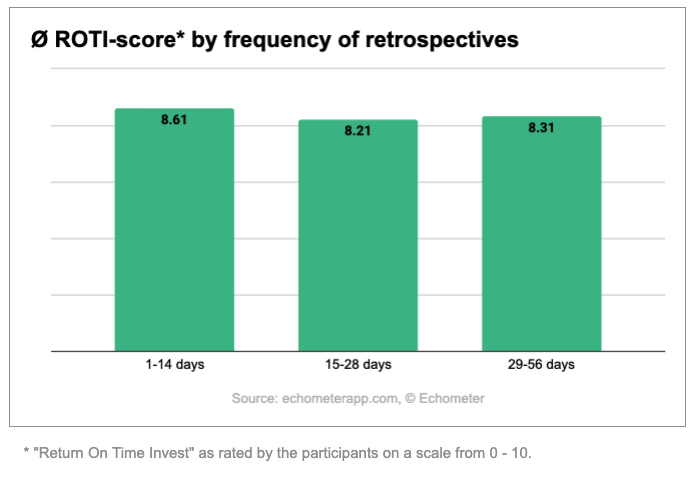
Note: We only included teams that performed at least 5 retrospectives with Echometer in this part of the analysis have.a
Key learnings: This is what the perfect retrospective looks like 🤩
The perfect retrospective...
Takes place on a Friday
Takes 30-45 minutes
Has 3-5 participants
Has a frequency of 7-14 days
Retrospectives that fit this pattern have an average ROTI score of 9.07/10.
So this pattern setup lands well above the average of 8.33 mentioned at the beginning.
Bonus: How to improve your retrospectives 🔥
Variables like your team size and the frequency of your retrospectives might not be something you can change in the short term. But we noticed one more thing that really every team can consider to improve their retrospectives:
We can say with great certainty that discussing and completing past actions will result in a better ROTI score for a retrospective.
It also makes sense: By not only diligently distributing measures, but also implementing them and discussing the results, you increase the team's sense of self-efficacy.
In order to use this effect in Echometer as well, we have an extra dedicated step in the retro agenda: "Review of measures". In this way, no measure from a retrospective is ever swept under the table. Perhaps you too will incorporate this step into your next retrospectives.
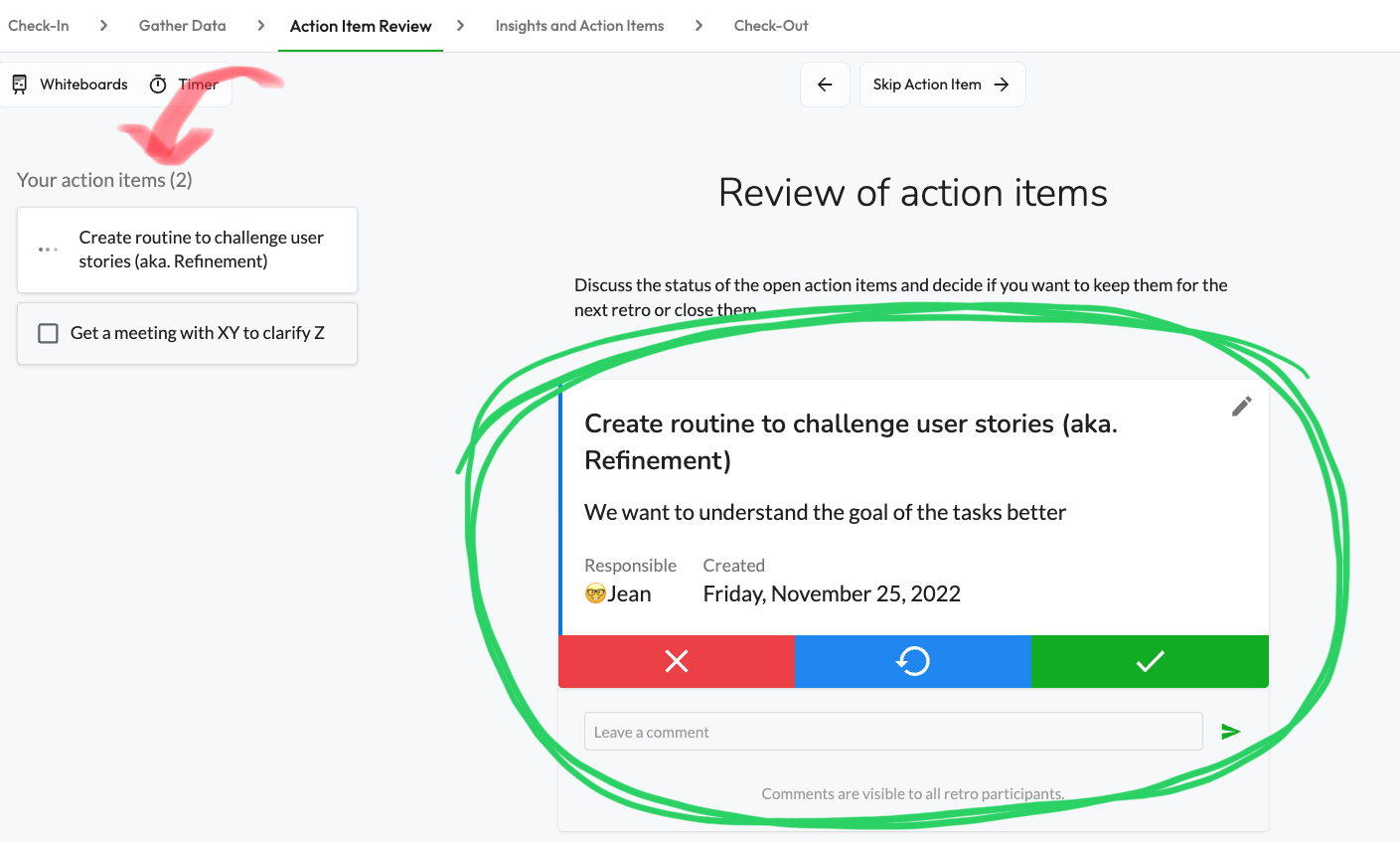
By the way: OpenAI's ChatGPT also has some tips for agile coaches. Feel free to take a look at our interview ChatGPT on Agile Coaching.
Method: What to consider ☝️
As with any data analysis, the results can of course only be transferred to any context to a limited extent.
For example, when we shared the first results on LinkedIn, Giancarlo had a good tip. You can find our response to Giancarlo's comment at LinkedIn. So much in advance: She has with the Outcomes of retrospectives to do.
In particular, the classic sample bias must be taken into account. The sample is of course only the users of our Echometer tool. This could lead, for example, to the quality of the retrospective increasing on average due to moderation support, etc. However, due to the amount of retros and the breadth of the global sample, we can assume that the trends shown here are valid for many typical contexts.
Conclusion: The greatest analysis of retrospectives
With a population of over 30,000 retrospectives, this is the largest retrospective analysis published to date, to our knowledge.
As described, the data is of course not representative of the entire agile community. Our data collection is limited to the anonymous sample of our users at Echometer and their retrospectives in the period from 2020 to 2022.
Do you have questions about the analysis or other ideas about which variables we should examine? Then discuss with us on LinkedIn or Twitter.
We look forward to your messages and comments!

